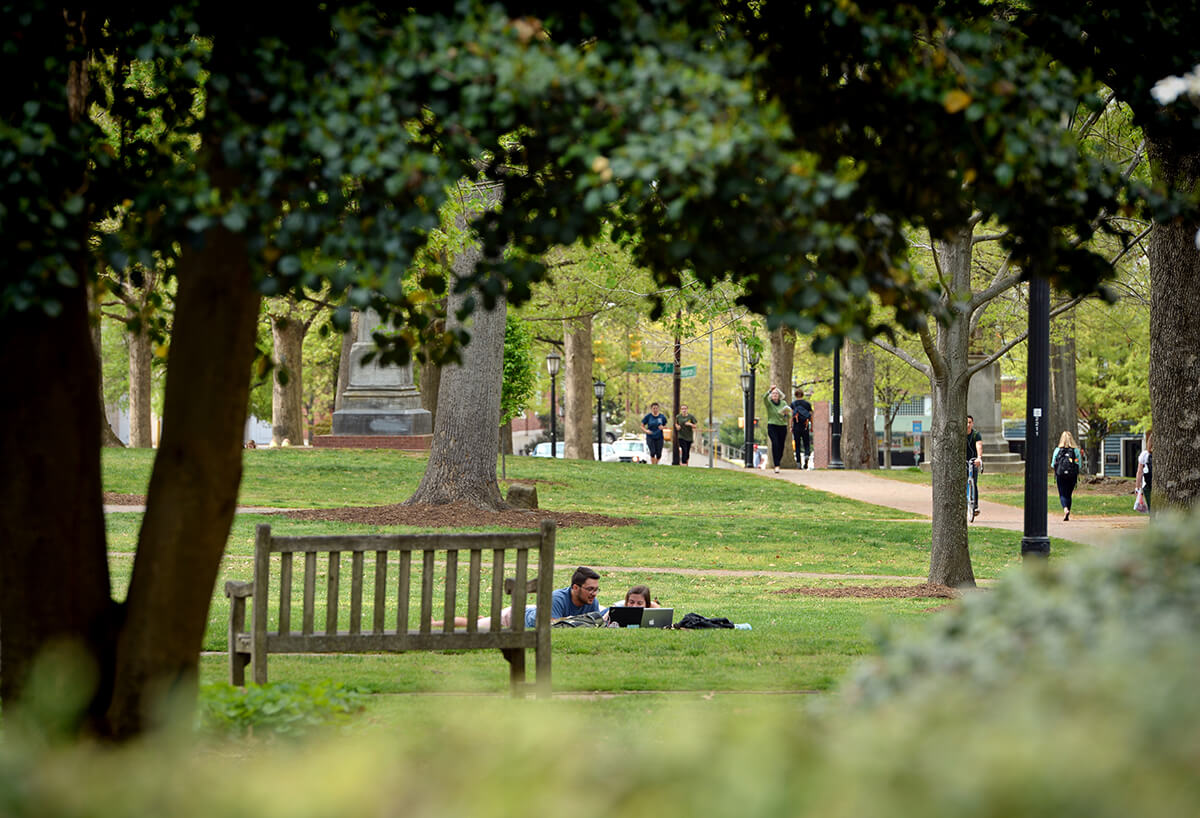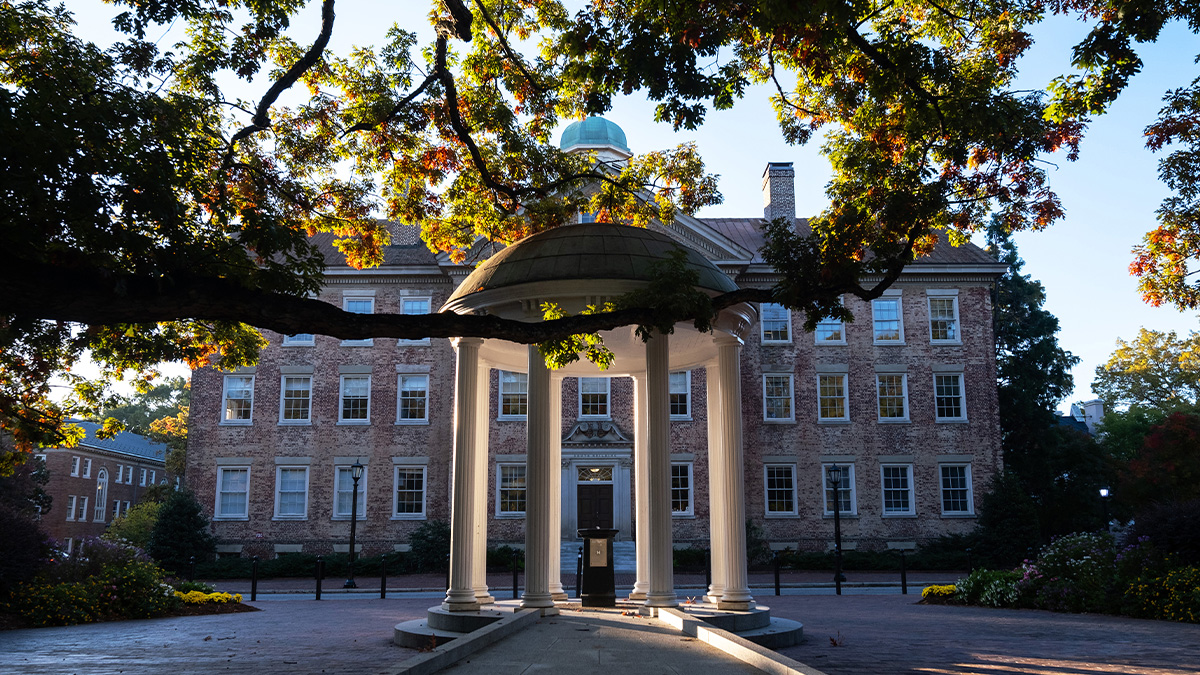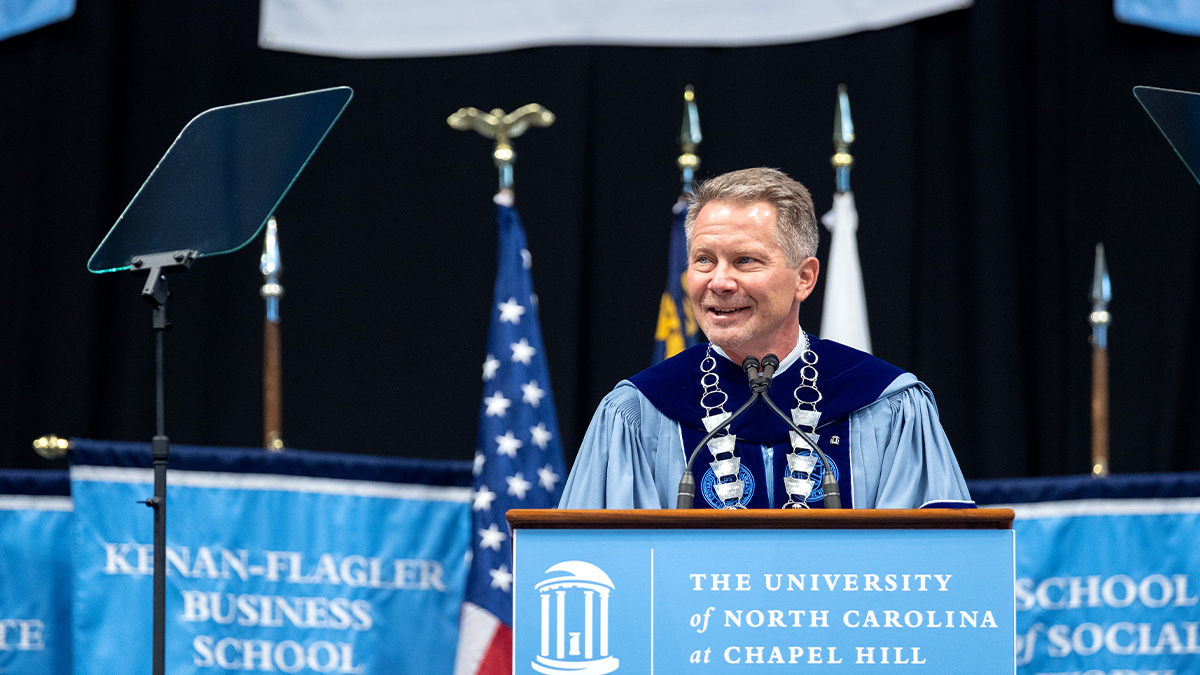History Task Force presents interpretive options for McCorkle Place to trustees
Plans include signage for the north entrance at Franklin Street and the south entrance at Old East; repair and renovation to the Unsung Founders Memorial; a marker for a history of the land’s indigenous peoples; and a marker giving historical context to the Confederate Monument.

History professor James Leloudis of the Chancellor’s Task Force on UNC-Chapel Hill History updated the University Affairs Committee of the Board of Trustees on a plan for developing signs, markers and online content to give people a better understanding of McCorkle Place
The plan will use that quad to introduce visitors to “the broad sweep of our institutional history, from the story of this land and this place prior to European settlement to Carolina’s stature today as one of the world’s leading research universities,” Leloudis said.
Phase one of the interpretive plan for McCorkle Place includes signage for the north entrance at Franklin Street and the south entrance at Old East; repair and renovation to the Unsung Founders Memorial; a marker for a history of the land’s indigenous peoples; a marker giving historical context to the Confederate Monument; and related digital content.
In the years since the Unsung Founders Memorial was installed, the monument gradually sunk into the ground, obscuring the figurines that make up its base. The goal of the repair and renovation is to stabilize the piece, improve accessibility and make the space more contemplative and reverential.
The two design concepts presented by Surface 678, a Durham firm, both connect the memorial to the brick walkway, place it on a round hard surface and encircle it with curved walls for reading and sitting. Both also include two markers, an introductory one at the entrance to the space and an artist’s statement.
The only real difference between the two is that the first concept breaks one of the curved walls with three slots, each on a sightline to a building constructed by enslaved people: Old East, Old West and Person Hall.
Riggs Ward Design, a Richmond firm, developed design concepts for signage and markers in McCorkle Place. The first concept embeds medallions and an engraved sign in the wall at the steps leading up from Franklin Street and in a new curved knee wall near Old East. In the second concept, the gateway signage is tall and vertical, with separate markers embedded in the wall at Franklin Street and flush with the sidewalk at Old East.
Each of the proposed markers would include an embedded Bluetooth beacon to alert passersby through their smart phones or tablets, inviting them to access digital historical content online. The digital content will be “a virtual analog” to the history exhibit installed in Carolina Hall in 2016, Leloudis said.
Scholars working under the direction of Leloudis have already completed the digital content about the Confederate Monument and are about halfway through the content for the Unsung Founders Memorial. That story will be told through the life of Wilson Caldwell, who was born into slavery and went on to found a school for African-Americans and to serve as a justice of the peace. Content about the history of indigenous peoples and their relationship to the University will also be developed working with Native American scholars and community representatives. Task force members hope to prompt people to visit “The Gift,” a tribute to North Carolina Native Americans created by Haliwa-Saponi artist Senora Lynch, at the Student Union.
At the end of the presentation, trustee Jeff Brown asked Leloudis if the interpretive plan for McCorkle Place could be expanded beyond the memorials and monuments there.
“I was struck by the gateway markers [with the legend] ‘the birthplace of American public higher education,’” he said. “It seems to me that there’s an opportunity to broaden McCorkle Place’s recognition.”
Leloudis agreed. “That has always been our intent for McCorkle Place and why we’ve described this as phase one,” he said. He added that he could imagine markers at Hill Hall, the University’s first real library, and Graham Memorial, named for University President Edward Kidder Graham, to name a few.
“That has been our ultimate goal all along,” Leloudis said, “to develop interpretive plans and design concepts that would allow us to spin this out to scale.”



